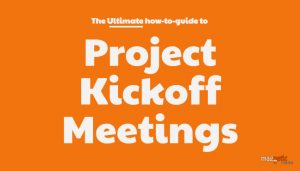One of the simplest, fastest, and easiest way I know to take any presentation to the next level is to “elegantly” set boundaries and rules during your introduction.
Boundaries and rules will tell people how to behave while you are speaking. If you don’t tell your audience how to behave, then they will do whatever they want to do, and sometimes that is not good for your desired outcome.
To reduce risk, to enhance your presentation, to declare your authority, and to make sure the presentation runs smoothly, set your rules up-front.
Notice that I said that you set the boundaries and rules “elegantly.” That’s a must.
The way to do that is to set rules and explain the benefit of the rules to the audience. This will ensure they understand why it is beneficial to them.
Below are some of the things you might want to be clear on under the rules and boundaries umbrella.
1 – Do you want the presentation to be interactive or not
2 – When do you want them to ask questions (during or after your talk)
3 – Any activities involved
4 – What mindset you want them to have
5 – Do you want them to take notes
6 – Do you want them to turn off their laptops or Phones (See my side note on this below)
7 – And any other rules that will make the presentation better
———-
Here is what I say to set up my rules and boundaries in presentations (usually towards the end of my introduction).
“… And here is how I would like this presentation to run:”
Then I lay out the rules and tell them the benefit of the rules to them (Because the purpose of the rules is to help them get the most out of your presentation). Here is an example of that from one of my presentations:
” I want this presentation to be interactive, I can stay up here and lecture you, but that will not be fun for you and it will not be fun for me. I will be asking you questions, I want you to ask me questions, and sometimes we will have discussions because that is the best way to learn.” (All this in a respectful and genuine voice)
———-
The only time you don’t have to set rules and boundaries is the time you present at a known forum, and everyone knows the rules. For example, at a high-level committee meeting at work (usually the rules are set by the committee), or at a well-known conference or venue (Where the rules are implied i.e. TED talks, sales conferences, big technology conferences)
The bottom-line.
It’s your presentation and setting your boundaries and rules are part of the design of your talk. The boundaries and rules should be a cozy and comfortable container to help your audience get the most out of what you have to offer.
———–
Side note 1: Some people ask me if I set rules about the use of laptops and cell phones. I rarely do this anymore. Instead, I make my presentations as interactive as possible so that people will not have a chance to work on their phones or laptops as much. From my experience, I found that this is a better way to handle the technology use issue. Also, competing against the technology for attention will force you to become a better presenter 🙂


